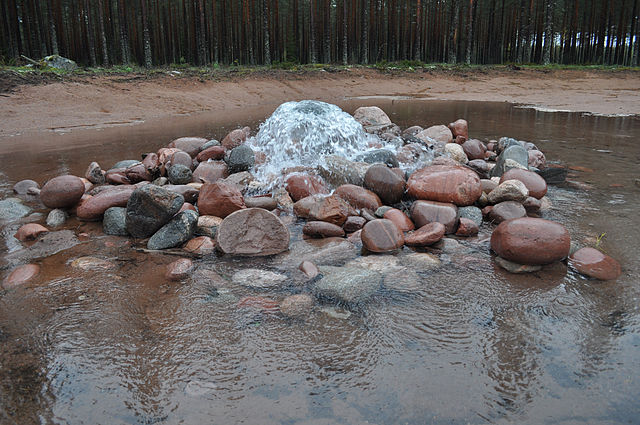Water quality refers to the chemical, physical, and biological characteristics of water based on the standards of its usage. It is most frequently used by reference to a set of standards against which compliance, generally achieved through treatment of the water, can be assessed. The most common standards used to monitor and assess water quality convey the health of ecosystems, safety of human contact, extent of water pollution and condition of drinking water. Water quality has a significant impact on water supply and oftentimes determines supply options.
Regional and national contamination of drinking water by chemical type and population size at risk of exposure
Sign in Sandymount, Ireland, describing water quality, giving levels of faecal coliform E. coli and Enterococcus faecalis.
Urban runoff discharging to coastal waters
An automated sampling station installed along the East Branch Milwaukee River, New Fane, Wisconsin. The cover of the 24-bottle autosampler (center) is partially raised, showing the sample bottles inside. The autosampler collects samples at time intervals, or proportionate to flow over a specified period. The data logger (white cabinet) records temperature, specific conductance, and dissolved oxygen levels.
Water treatment is any process that improves the quality of water to make it appropriate for a specific end-use. The end use may be drinking, industrial water supply, irrigation, river flow maintenance, water recreation or many other uses, including being safely returned to the environment. Water treatment removes contaminants and undesirable components, or reduces their concentration so that the water becomes fit for its desired end-use. This treatment is crucial to human health and allows humans to benefit from both drinking and irrigation use.
Dalecarlia Water Treatment Plant, Washington, D.C.
Sewage treatment plant (a type of wastewater treatment plant) in Cuxhaven, Germany
At Turun Seudun Vesi Oy's artificial groundwater plant, the pretreated raw water from the Kokemäki River is absorbed through the basins into the Virttaankangas ridge formation.
Empty aeration tank for iron precipitation








